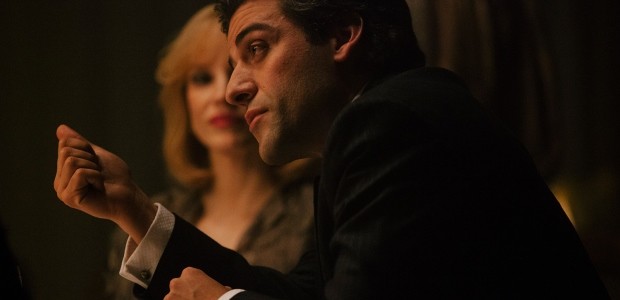Slowly stretch a rubber band between two fingers and you feel an invisible force building up on both ends. Now imagine drawing an arrow and holding that embryonic force for 125 minutes. Such is the exhaustive yet powerfully gripping nature of A Most Violent Year – a microscopic character study that dissects morality down to its nucleus; and then some.
At the outset, I must admit that going in for this film, I was expecting something along the lines of a Francis Ford Coppola crime caper. Ostensibly, the title will do that to you but rather than calling it a curve ball, I’ll just say it’s writer-director J. C Chandor’s swirl of a double edged boomerang. Set in the winter of 1981 New York, the titular year is an actual reference to the most violent year in the city’s history. It’s a thematically rich setting for an era that inspired some of the most memorable crime dramas in cinema history. A Most Violent Year has a lot of that flair but there exists a fine line between organized crime and the moral dilemma of protagonist Abel Morales (Oscar Issac). As a sort of conduit to biblical reference, Abel is hardworking and ethical, but also a hawkeyed businessman making headway in the heating oil industry. Having taken over the company from his father-in-law, a known mobster, Abel faces possible indictments from the District Attorney’s office with reason to believe his business is involved in industry wide corruption. His bookkeeper wife Anna (Jessica Chastain) assures him they have nothing to worry about but Abel has bigger fish to fry. After a 40 percent down payment on an oil storage terminal, Abel has to come up with the remaining amount in a month or risk loosing his entire business. But then his supply trucks start getting hijacked, and Abel finds his integrity as a businessman tested. His options – track down his aggressors lawfully, or allow his wife to call in mob intervention.
Part of what makes Chandor’s screenplay an enduring force is Abel’s unpredictable outcome in pursuing the American Dream. And while each predicament escalates into dangerous situations for his family and his business, you eagerly expect Abel to turn to the dark side, a side of him that we often see bubbling under the surface. But as it turns out, Abel has ice in his veins, thus stretching that rubber band even further. You never know when he will snap. Supplementing Chandor’s throwback to the late 70s era of gangster films is Issac’s choice in casting – an uncanny resemblance to Al Pacino’s looks, style, and disposition some 40 years ago. In a mesmerizing turn as a man with executable power, both latent and surging, Oscar Issac is simply phenomenal and a rising talent to watch out for. And although Issac is tasked with anchoring this original story, Chastain is equally commanding and versatile by exhibiting fiery pep as a mother, a wife, and a daughter with connections to the mafia. Together, their onscreen chemistry is bizarre but strangely alluring when allowing us to mull over who wears the pants.
At the time of writing this review, A Most Violent Year has been snubbed for the 2015 Academy Awards. It’s a shame considering how remarkably close this film is in style and atmosphere to some big titles from the likes of Coppola or Martin Scorsese. With deliberate pacing and drawn out conversations, this is not a ‘bada-bing bada-boom’ sort of crime drama, but as homage, or not, this film is only Chandor’s third foray as a director and its exceptional quality is riveting enough for us (and the Academy) to stand up and take notice. All is Not lost, Mr. Chandor.
Rating: 




